By: Carmen Isabel Maracara,
Twitter: @ palabracierta1 / Instagram: @palabracierta
Photos: Carmen Isabel Maracara and courtesy of Hacienda Las Bromelias / Cacao de Oro
In Las Vegas, Cumboto sector, about 100 metres from Los Dos Caminos bridge, Aragua State, it is located Hacienda Las Bromelias, with 4 hectares dedicated to the cultivation of cocoa. Its owner, Freddy Fischer, speaks passionately about what will soon turn 10 years old (in March 2017) as a project to produce organic food for his family, which quickly became a space that pays tribute to what was a heritage of these soils: the cultivation of cocoa.
After many trials and mistakes and being about to give up in some occasions, the project took shape resulting in what is this farm today: “A centre of productive research”, in Fischer’s own words. What’s the reason? That from this space several investigations are carried out to improve cocoa production in the country, with the participation of entities such as the National Institute of Agricultural Research (INIA), the National Institute of Integral Agricultural Health (INSAI) and the Central University Of Venezuela (UCV). Likewise, Las Bromelias has also participated in the activities of the Plan Cacao Nestlé.
“We are developing some projects as crossbreeding Chuao 120 with Ocumare 67, in the search for the Super Cocoa, as we say. The reason is that Chuao 120 is resistant to many plagues and has very good organoleptic properties, despite its grain is very small. Ocumare 67 has good organoleptic properties as well, it is also a white grain, but it is not very resistant to plagues. When they were crossbreed by controlled pollination, a scientific method, a few pods were obtained and planted. We have already a bank which is beginning to produce. Its characterisation is still pending. Unfortunately, this research could take up to 15 years to be completed. “
In contrast to farmers who remain at the stage of production cocoa pods or those chocolate makers who process the grain to produce chocolate bars, Las Bromelias project includes selling Criollo cocoa plants (varietal), cocoa beans, 70% handmade chocolate and cocoa powder and by-products.
“We are a company dedicated to making and marketing fine aroma cocoa beans. Equally, we carry out sowing, harvesting, post-harvesting and processing of cocoa. The quality of our final product is established by the traceability of each cocoa bean, “as indicated in its social networks: Facebook: @cacaodeoroca, showing part of its operation, as well as in Instagram @cacaodeoro..
“We also produce cocoa trees. We have a nursery with a capacity of 70 thousand plants per every three months cycle, for about 250 thousand plants, “Fischer points out in order to prove that Las Bromelias has helped boost cocoa farming in Aragua and other areas of the country.

Testing, erring and achieving
As a fruit of a vision that seeks to achieve results from the experience, Fischer has worked to break paradigms in handling this fruit: “I sow without any shade. I only have a temporary shade from some banana trees, nothing more. I left only a few trees in the area and I use irrigation equipment. I created my own cocoa production technology simply based on observation and research.”
“In our hacienda some production myths were dispelled, already done elsewhere, but still remain here, such as cocoa trees should always be under shade. That is not true. During its early years, cocoa is very vulnerable to the sun, but after that it just requires sun and hydration. I know this might be very controversial, “he says.
“The lack of experience caused us some production delays: the tree branches got broken due to much load, so I began to tie them, but the nylon strings cut them. When the workers helped me, the small plants were damaged by the machete, so I had to re-sow them. Either there was water shortage or they dried up. We were about to give up. There came a time when we set a deadline of a year to get it work, otherwise, we would give up. Then, it began to work and we start selling cocoa. We used to sell cocoa slime. Cocoa is pricked, threshed and without fermenting or drying it is taken to someone else to processing it. Thus, I was aware that the marketing chain tends to be speculative and usually the producer takes the smallest part “.
Then I established my processing centre, after having carried out a complete investigation. I built a sliding roof yard, which I already removed and finished making a solar dryer, a kind of canopy made with transparent plastic, resistant to ultraviolet rays and I realised that it is fantastic. Finally, I removed everything else and built three awnings and three solar dryers, which is what I work with. In other words, there was developed a certain technology at Las Bromelias. The grain is dehydrated homogeneously and receives an adequate impact of the sun “he explains.
“It is very necessary that there are several processing centres in one area, for two reasons: first, to improve capacity for producers to take their cocoa and second, to stimulate competition, thus, they could have the option to decide where to process their seed. By having just one centre there is an imbalance. For example, in Ocumare de la Costa there are about five cocoa processing centres, before there were only one or two. Sometimes they go up to six or down to four, but there are alternatives. When I started to take my cocoa there, I realised that the figures did not convince me. Hence I began to understand the marketing chain of cocoa. “
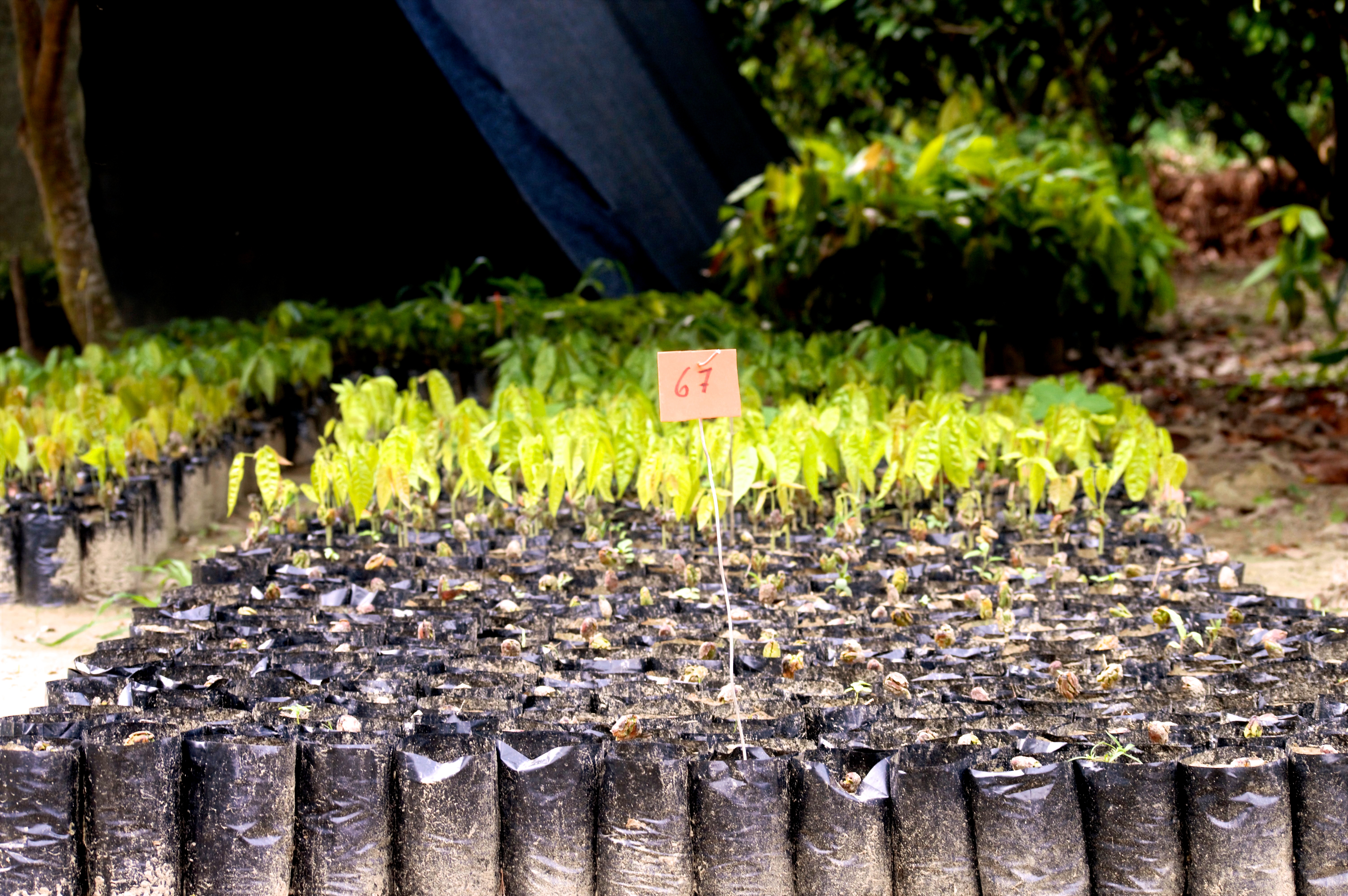
A productive clonal garden
In Venezuela, specifically, from 1945 onwards, “There began in the country the cultivation improvement works with the selections from northern Aragua in Chuao, Choroní and Ocumare de la Costa” according to researchers Gladys Ramos and Álvaro Gómez, in their publication “Genetic aspects of cocoa cultivation”, published by the INIA. Such a work led to the creation of a germplasm bank of cocoa from this zone.
“We keep part of that clonal garden of 1945. I consider that this is one of the best works been done in Venezuela on recovery and identification of cocoa. At that time, these researchers managed to classify 24 trees, of which 4 have been missed, Fischer explains.
“From my perspective, this is the best collection that has been made in the country. The famous Ocumare 61 and 67 were originated from it. The Franceschi, the Chuao and the Choroni come from there as well. There are other collections that have the Guasare, the Canoabo, which are ancient criollos, and porcelana. “
From that germplasm bank of 1945, Fischer developed new clones. “I replicated some of those materials and formed a genetic bank, to have a back-up. The INIA also has one as well as the UCV. I planted big quantities of four fundamental varieties of these materials: Ocumare 61 and Ocumare 60, which although genetically are related, one is white and the other is light violet. The Ocumare 60 is a light violet, with white segregation. Moreover, I added the Chuao 120 and the Ocumare 67 into the plantation. Unintentionally, the grafter mixed the materials and it turned out to get a very good result. In reality, 50 percent of the plantation is Ocumare 61, and the other 50 is Ocumare 60, but the grafter got confused even though there are trees that were mixed by cross-pollination. That hybridization give a very special characteristic to that mixture of cocoa, which I call it Bromelia. “
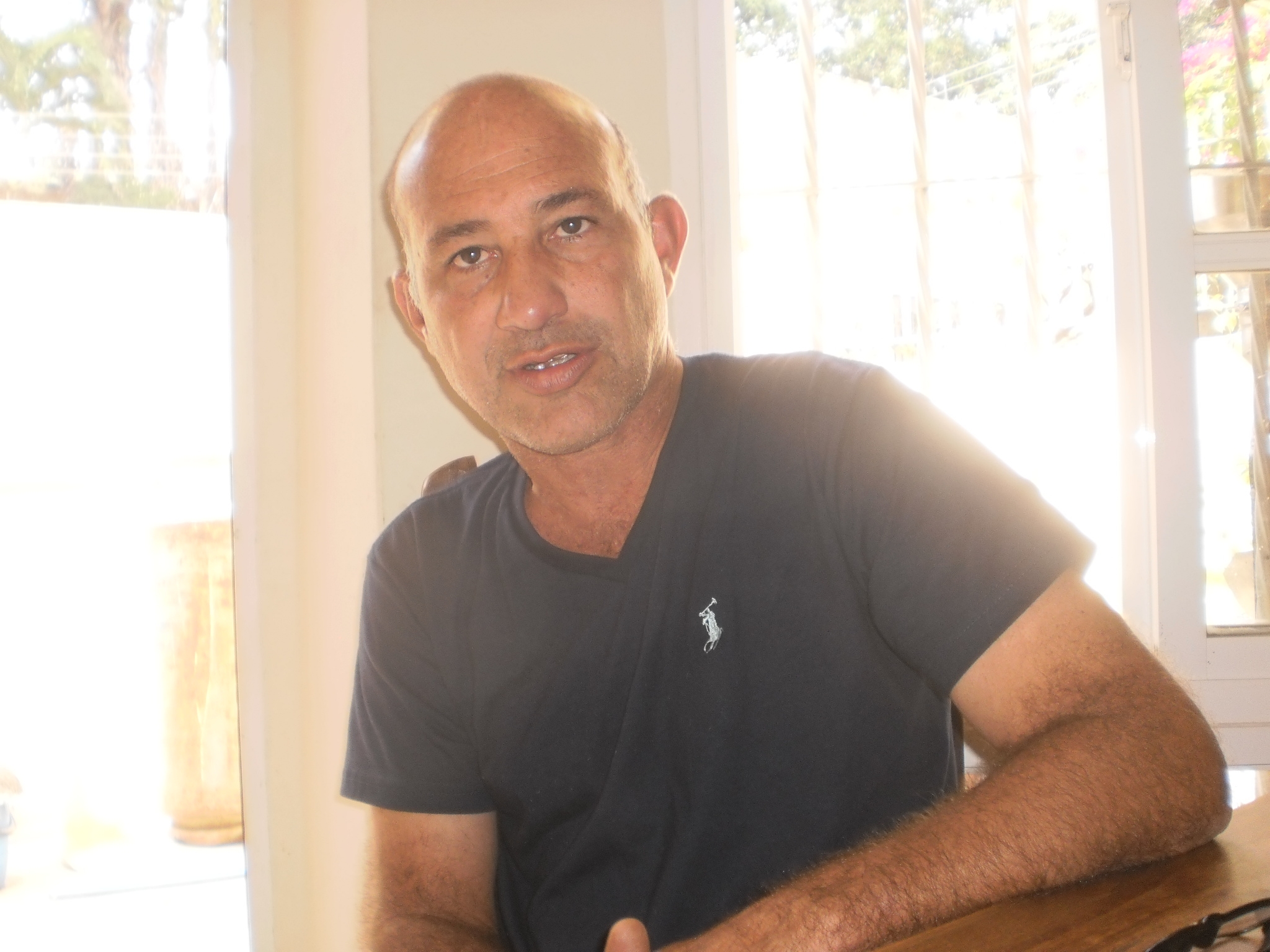
Fischer adds that this cocoa has a very special, unique flavour. The reason is that “the Ocumare 60 has not been sown very much in Venezuela, nor in the world, People discarded it for being violet, but it turns out to be a cocoa with very interesting fruity notes, it is not astringent and it is highly productive. For instance, 22 pods of the Ocumare 61 give about a kilo of dry cocoa. The average in the area ranges from 25 to 30 and this is a kind of tree that gives 120, 140 to 180 pods per tree. Therefore, we could state that the average Ocumare 60 is very efficient and can produce 5 to 7 kilos a year.”
The unique characteristics of this cocoa from Hacienda Las Bromelias were certified by the Agricultural Biotechnology Research Centre (CIBA), Faculty of Agronomy of the UCV and on November 1, 2016 granted a Certificate of Genetic Origin of cocoa production on this hacienda.

Towards future
The sustained work on Hacienda Las Bromelias has been fruitful as it was the arrival of its cocoa to Europe, “it was specifically sold to Venchi, an Italian chocolate factory from 1876, who achieved a very good product, in which they specified its provenance. As per their comments to me, the chocolate has a very particular balsamic vinegar note”, the producer says.
The training of this team includes the attendance to the Chocolate School of Alba in Maracay, where they start testing to make chocolates, with very good results. At the same time, they made progress in manufacturing an artisanal husking machine, sponsored by Bank of the Treasury.
Currently, the association with Cacaos Caracas allows advancing in the manufacture of the necessary machines, including the final part of the husking machine and a refiner machine. “We think that soon we will start making chocolates. The good thing about our association with this group is that we handle a very interesting portfolio of cocoa, since they have two processing centres: one in the South of Lake and another in Curiepe. On the other hand, we are able to produce a chocolate with a different designation of origin here in Ocumare de la Costa “he concludes.

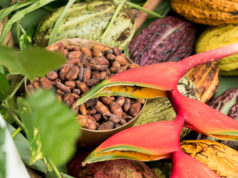
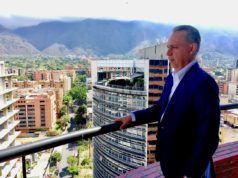
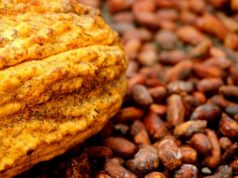



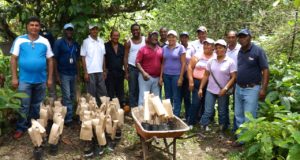
Excelente reportaje , con materiales como estos se puede elaborar un manual de identificacion por zonas cacaoteras
Muy interesante el sueño de Freddy Fischer y sus consecuencias .
Felicitaciones al Sr Fischer, un proyecto motivador y esperanzador en nuestra actualidad.
Me pregunto por qué no vemos más de nuestros chocolates en los supermercados de nuestro país?
Felicitaciones al Sr Fischer, un proyecto motivador y esperanzador en nuestra actualidad.
Me pregunto por qué no vemos más de nuestros chocolates en los supermercados de nuestro país?
Gracias por su comentario! En eso estamos, apoyando la labor de los productores y maestros del chocolate de nuestro país, nosotros nos hicimos la misma pregunta que usted cuando decidimos iniciar este sueño llamado Vivaelcacao.com. Saludos
Estoy muy interesado en lo del Cacao. Universidad Simón Rodríguez Núcleo San carlos – Edo. Cojedes . — Venezuela . Jorge Carrrillo. Estoy experimentando con ello pero me faltta mucha información. Ya he realizado algunas siembras pero me falta mucho por aprender.
Comments are closed.